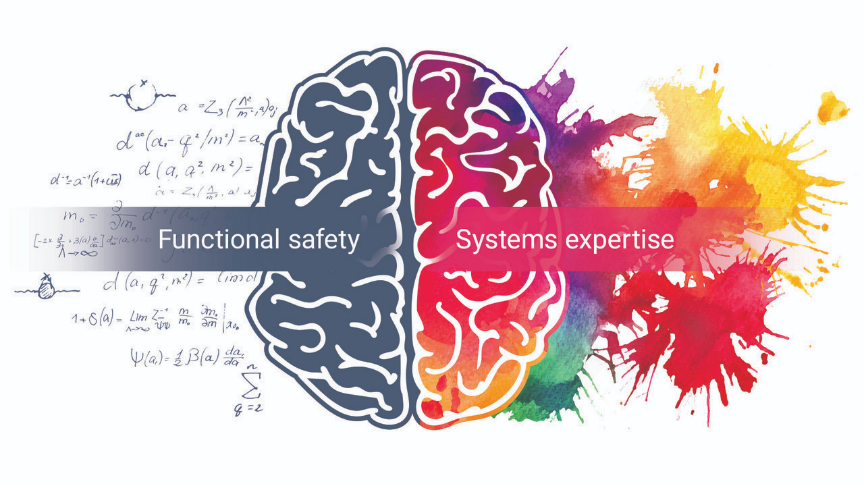SPRY348A October 2023 – March 2024 RM57L843
The recommended approach to designing functionally safe motor-control and drive systems
The ultimate goal for system engineers designing functionally safe systems is for them to approach functional safety compliance at the outset of the design process.
Designing and delivering a functionally safe system that meets a design budget requires a synergistic analysis of both safety compliance and intended functionality. Approaching the project independently or serially could result in challenges or even the inability to meet system design goals. Considering the earlier example with the team managing the safety function design process, earlier collaboration would likely have prevented the need to select a new MCU and reconfigure the PCB.
In fact, another example might illustrate the recommended approach. A human brain applies both its left (logical) half and the right (creative) half to holistically solve problems, as shown in Figure 2.
 Figure 2 A single brain has unified
expertise in both system design and functional safety compliance.
Figure 2 A single brain has unified
expertise in both system design and functional safety compliance.Think of the brain as a single organization where each half represents a different team or an internal design resource, capable of bringing their perspective of a particular discipline in the design process. Together, they can work as a single unit in the design workflow, approaching the design from their discipline while staying in clear and constant communication.
Similarly, the most effective design projects use a team of system designers and functional safety experts who work together to realize a functionally safe system.
To help accelerate time to market, systems engineers need the right design resources. For example, TI develops subsystem- and system-level functional safety concepts that are independently assessed by third parties.